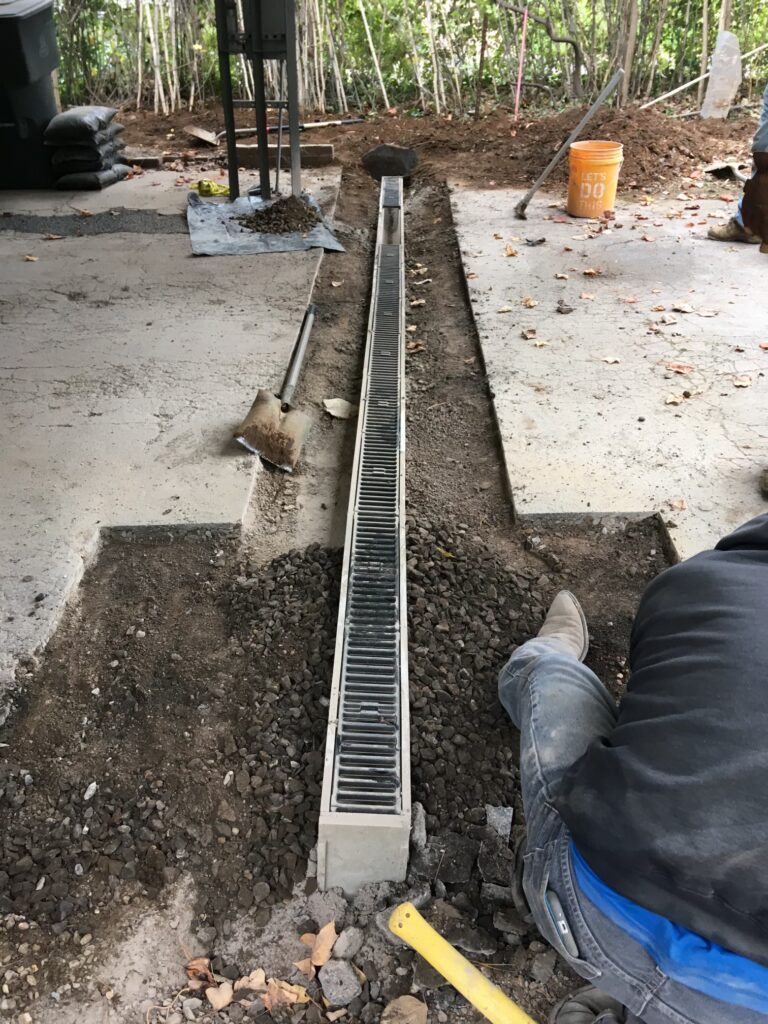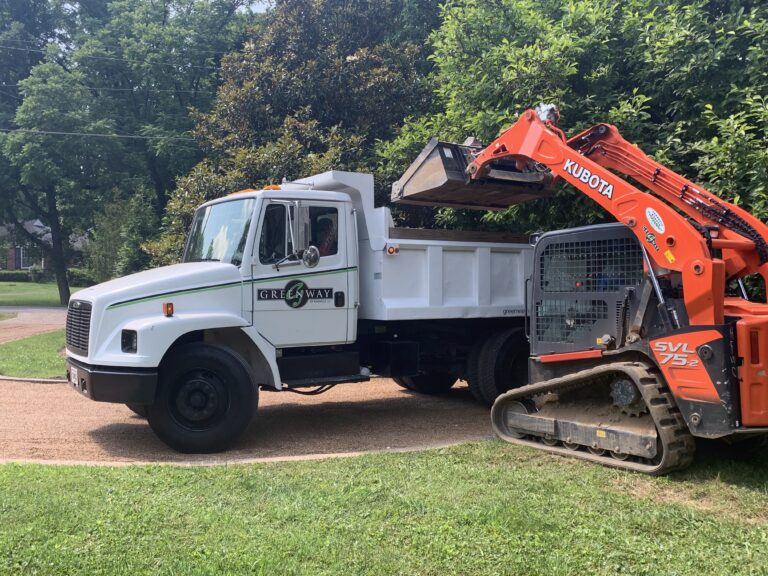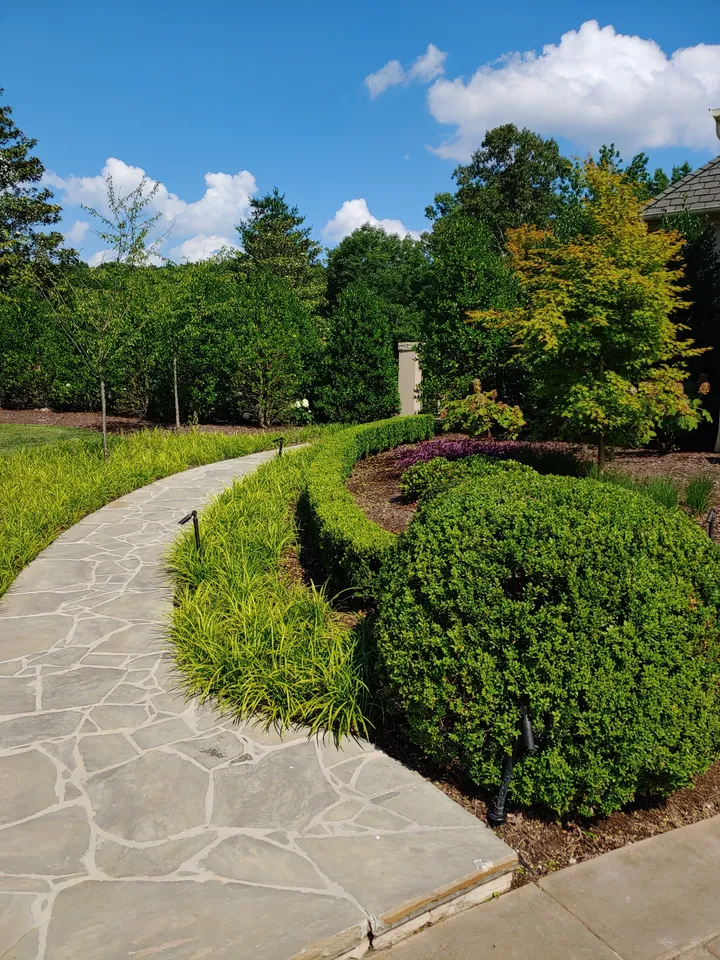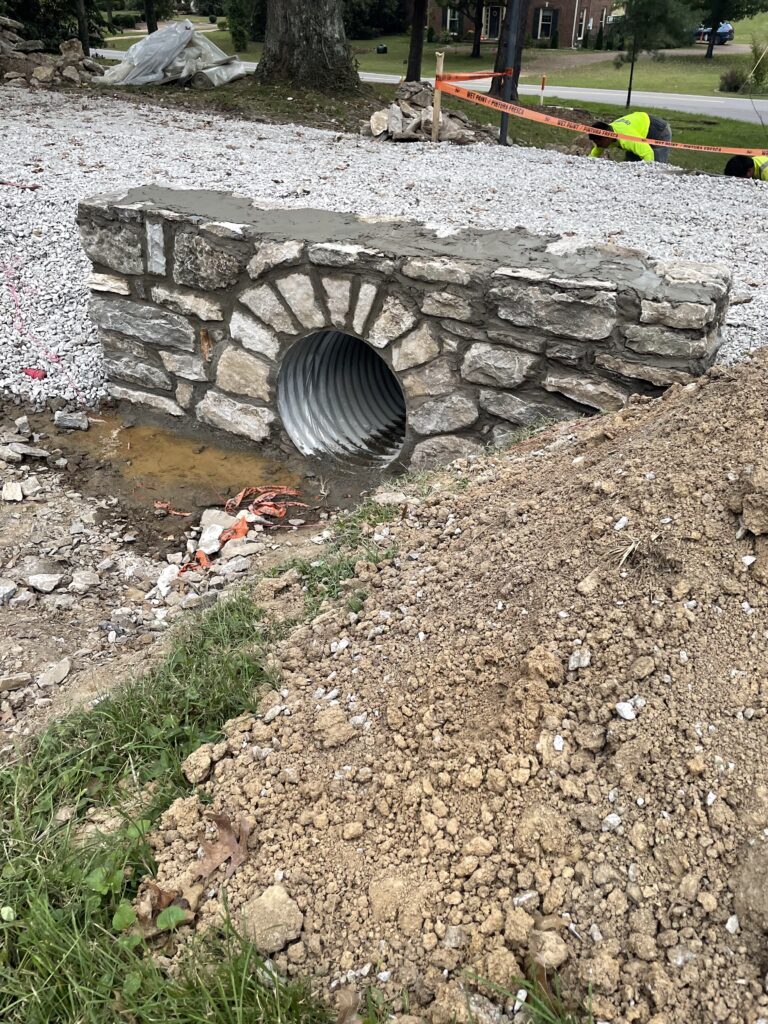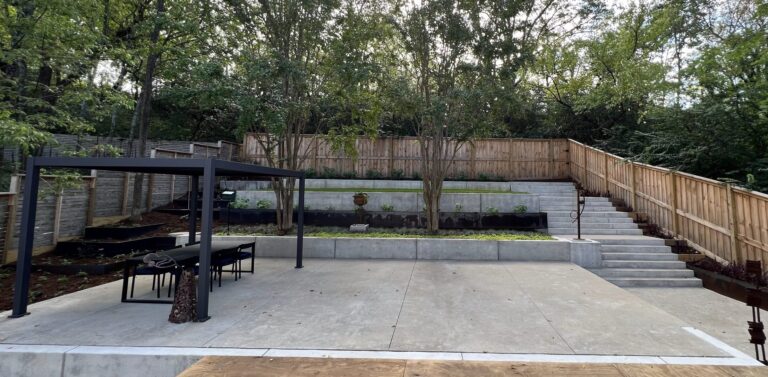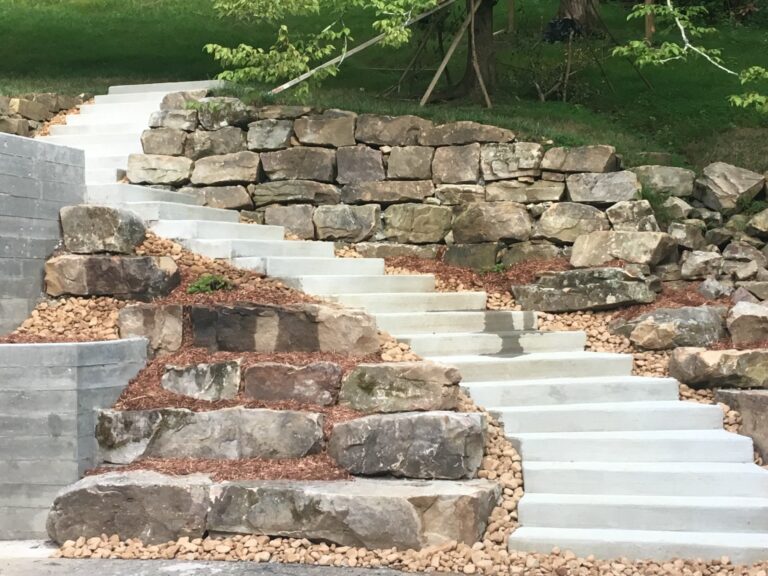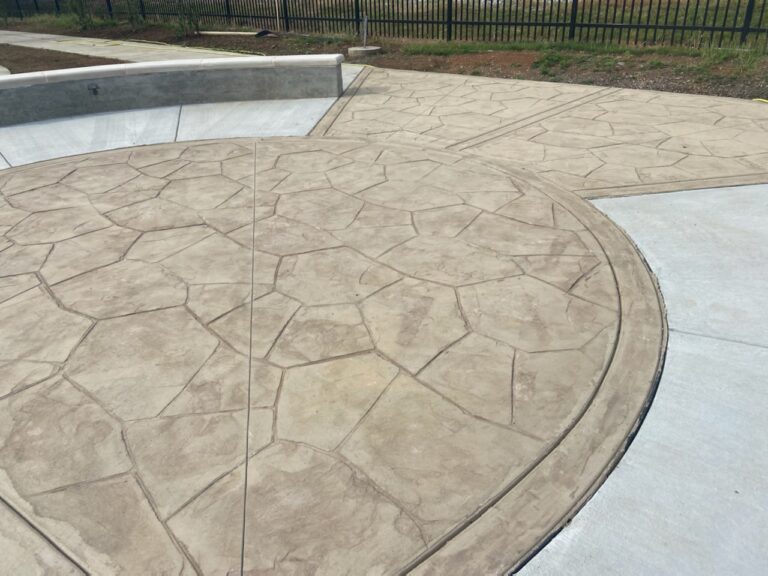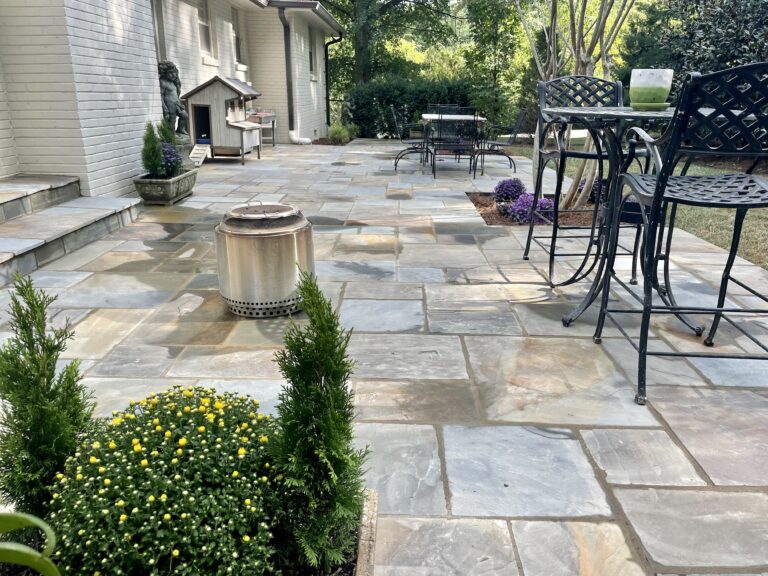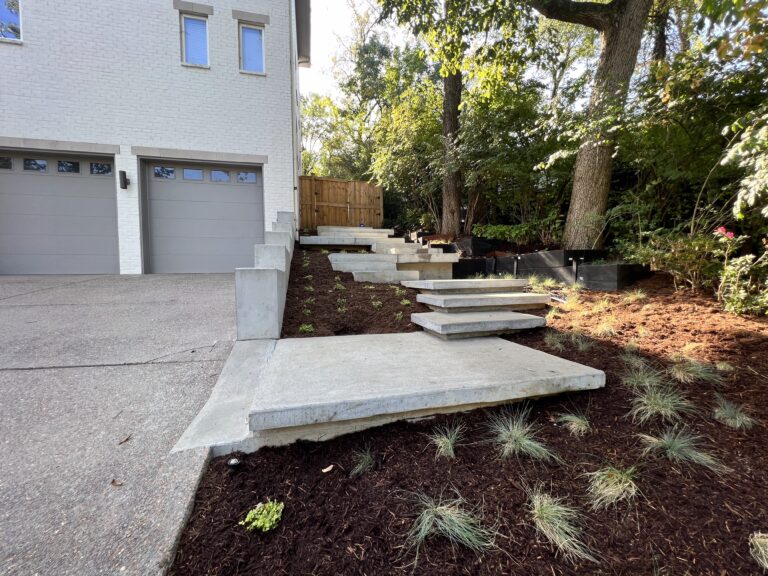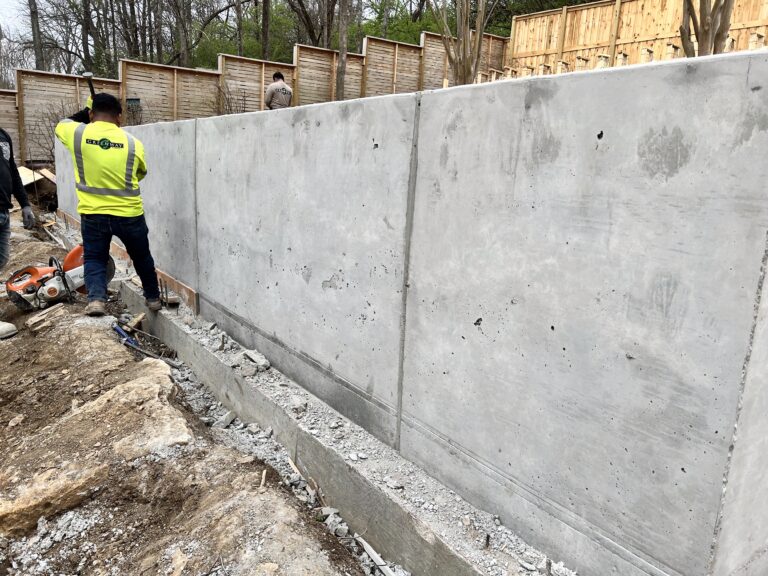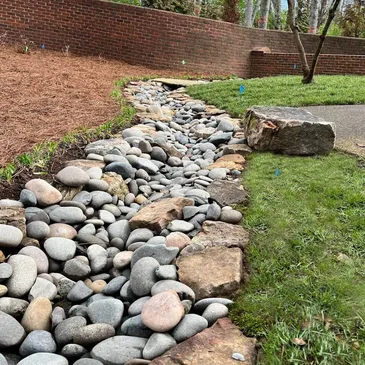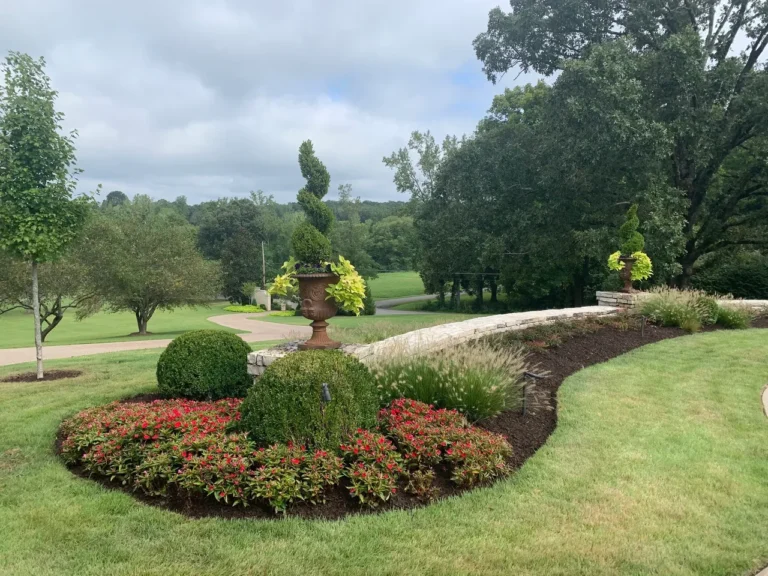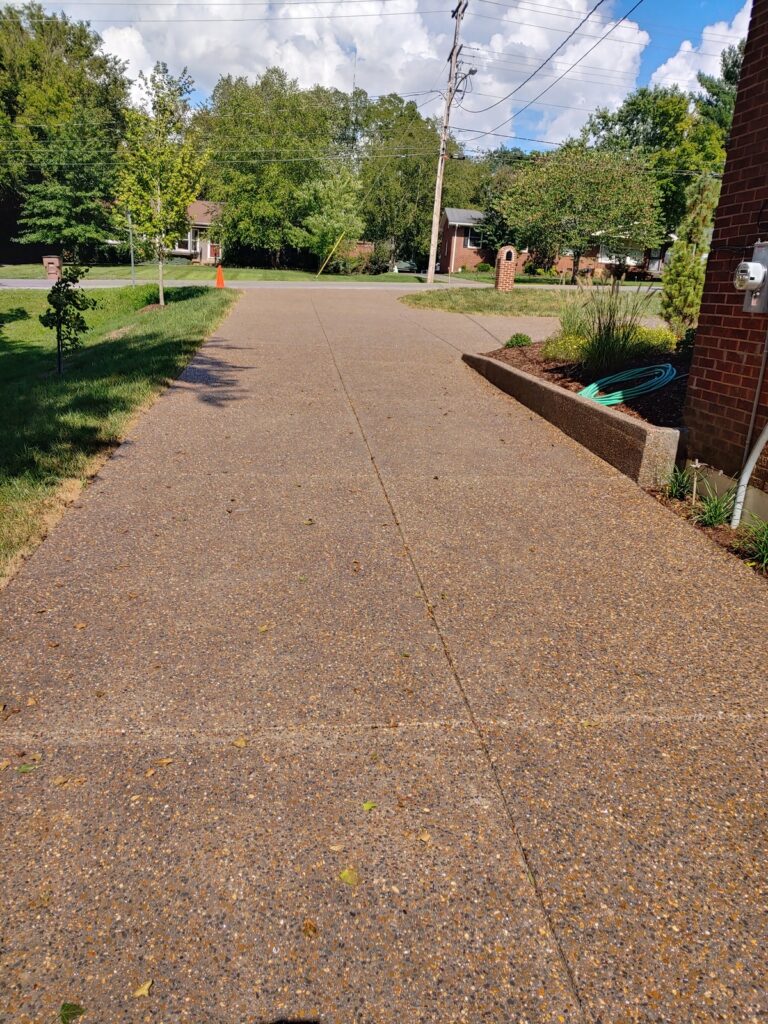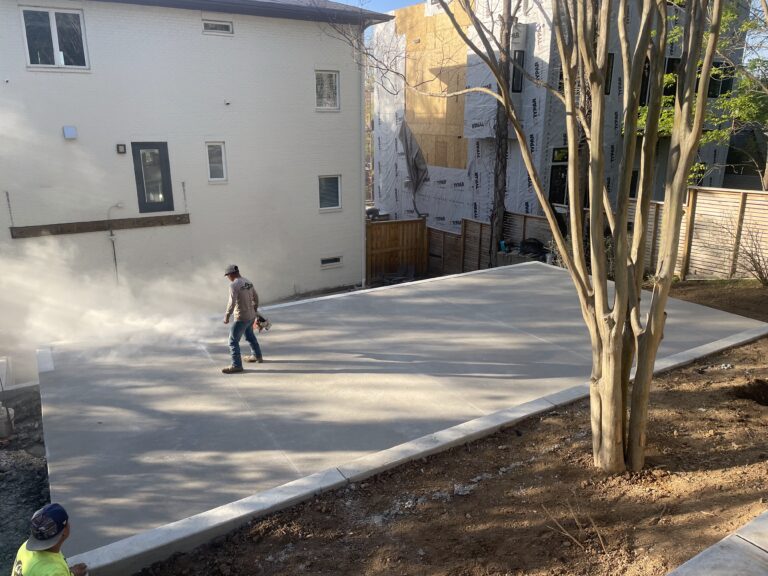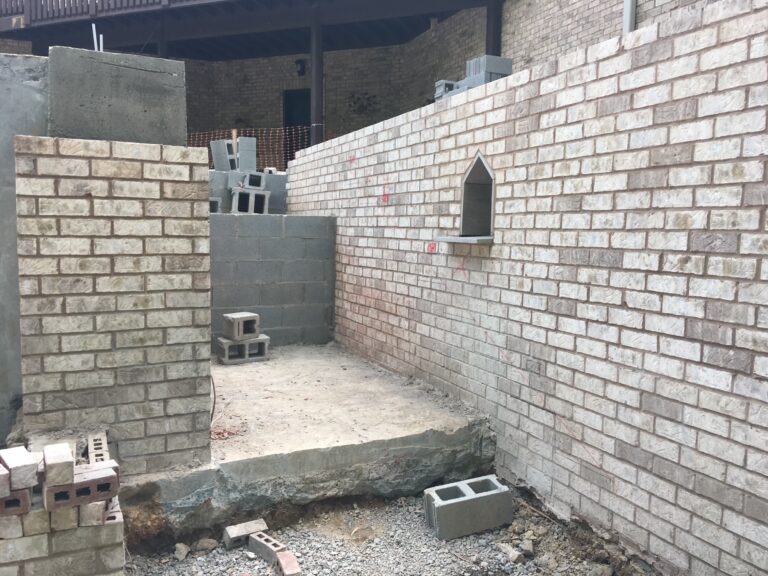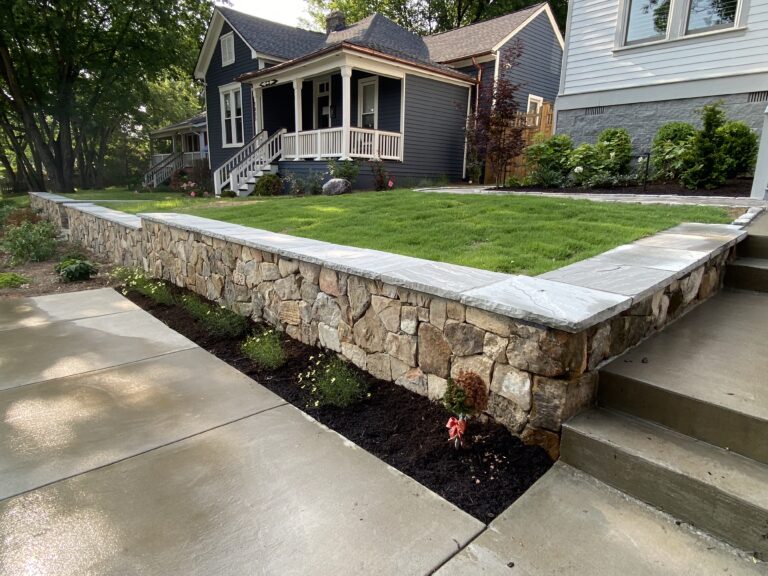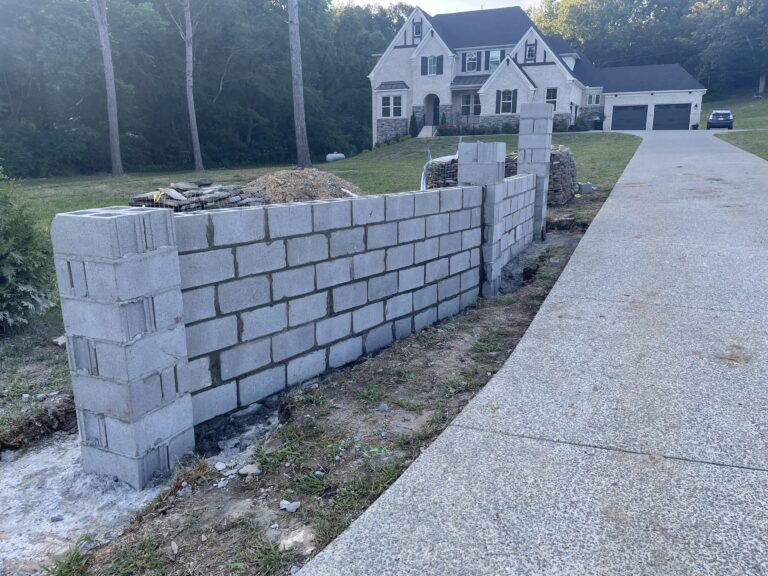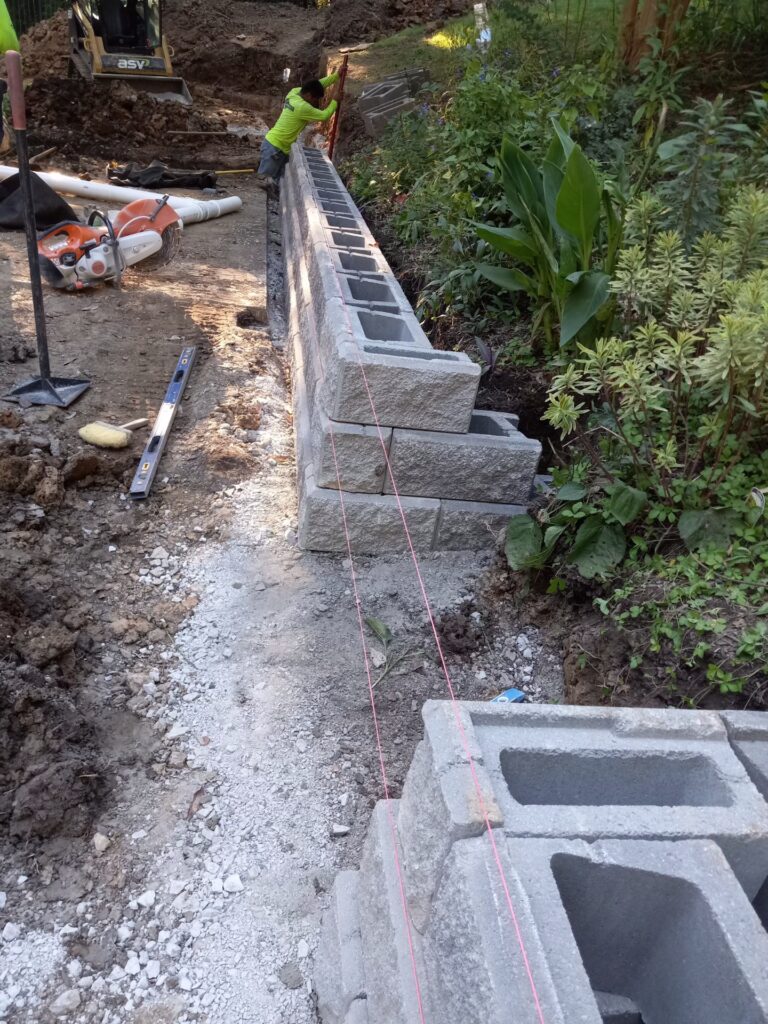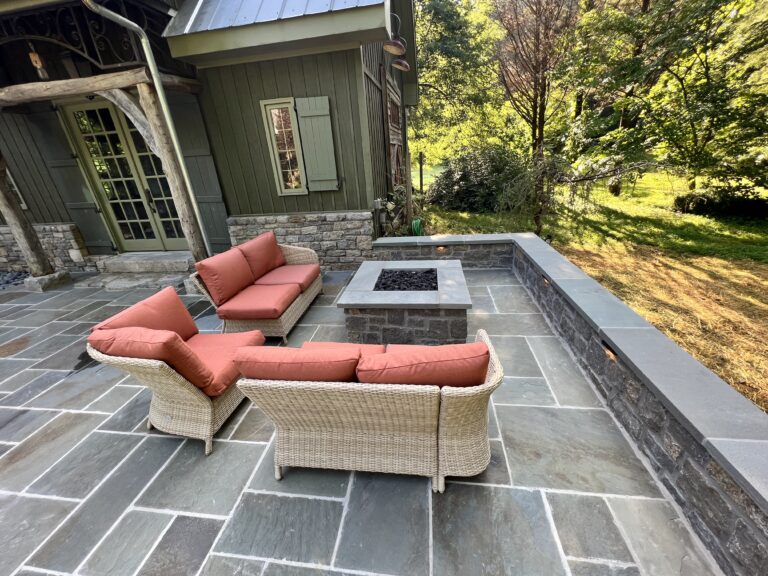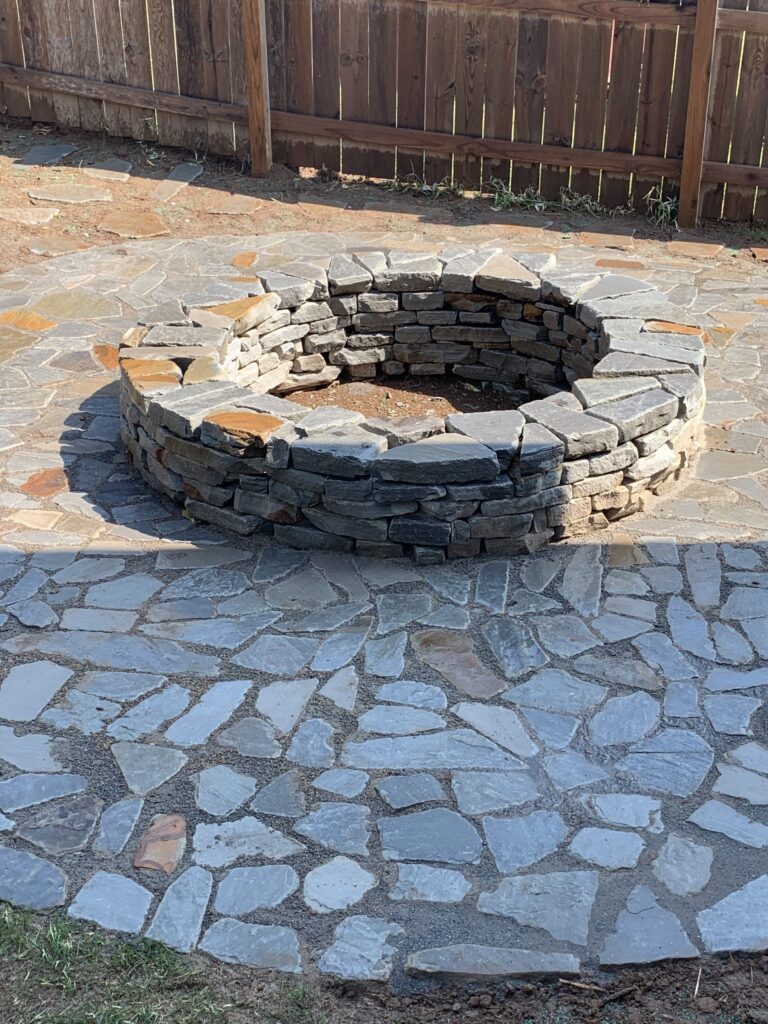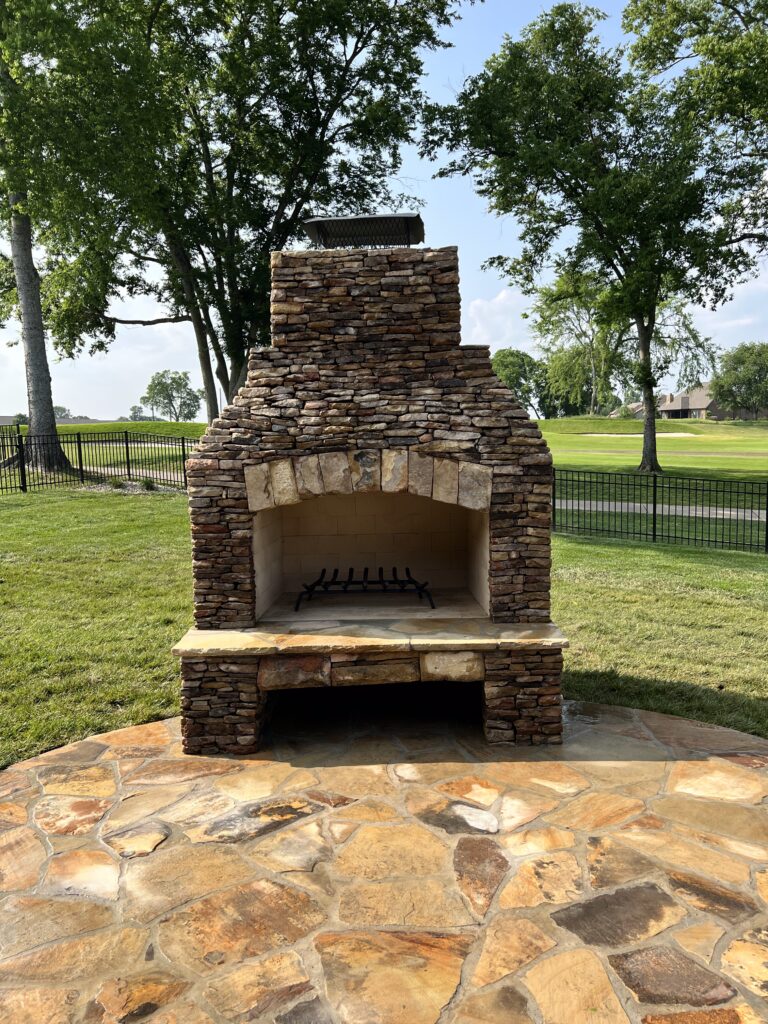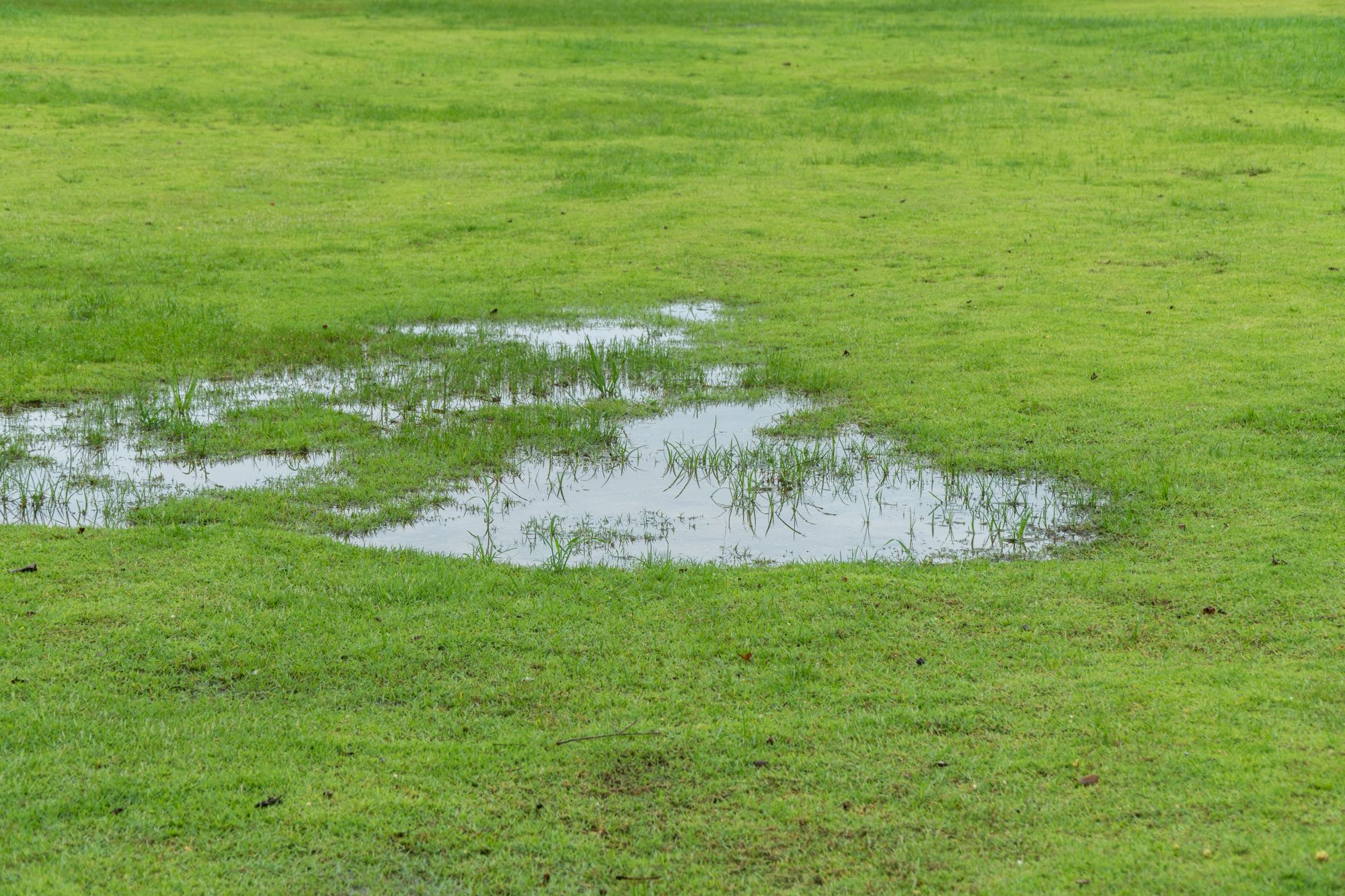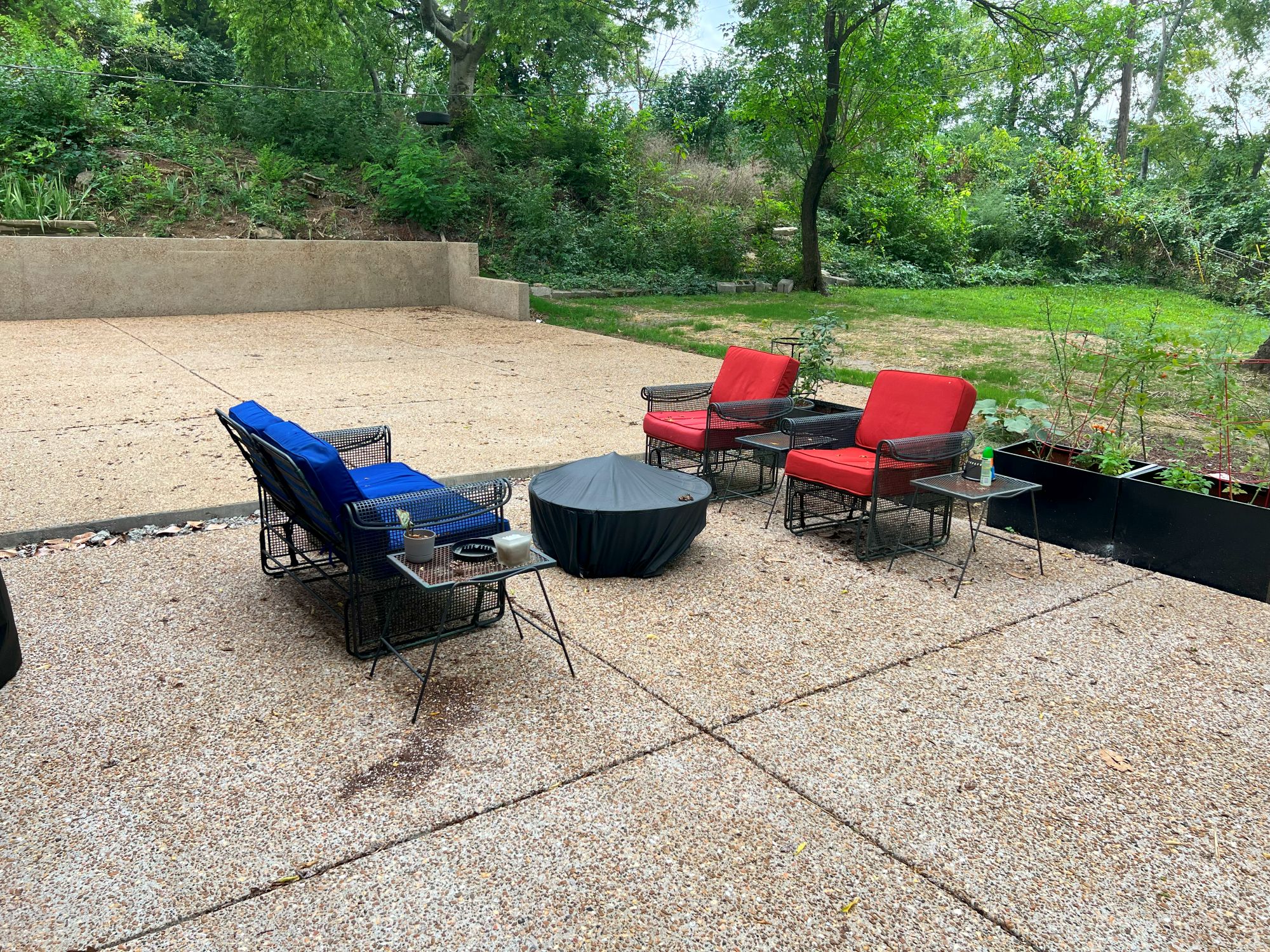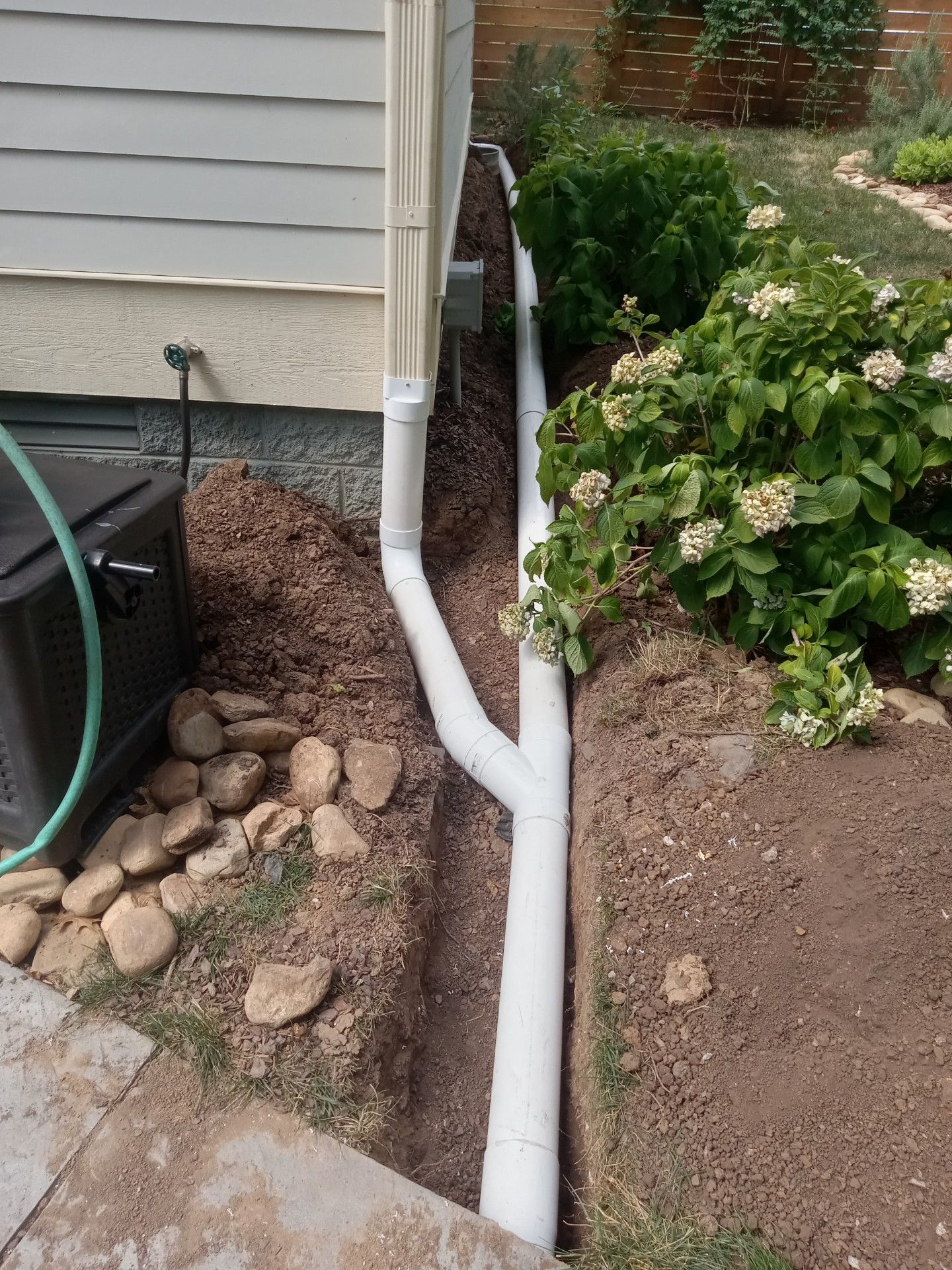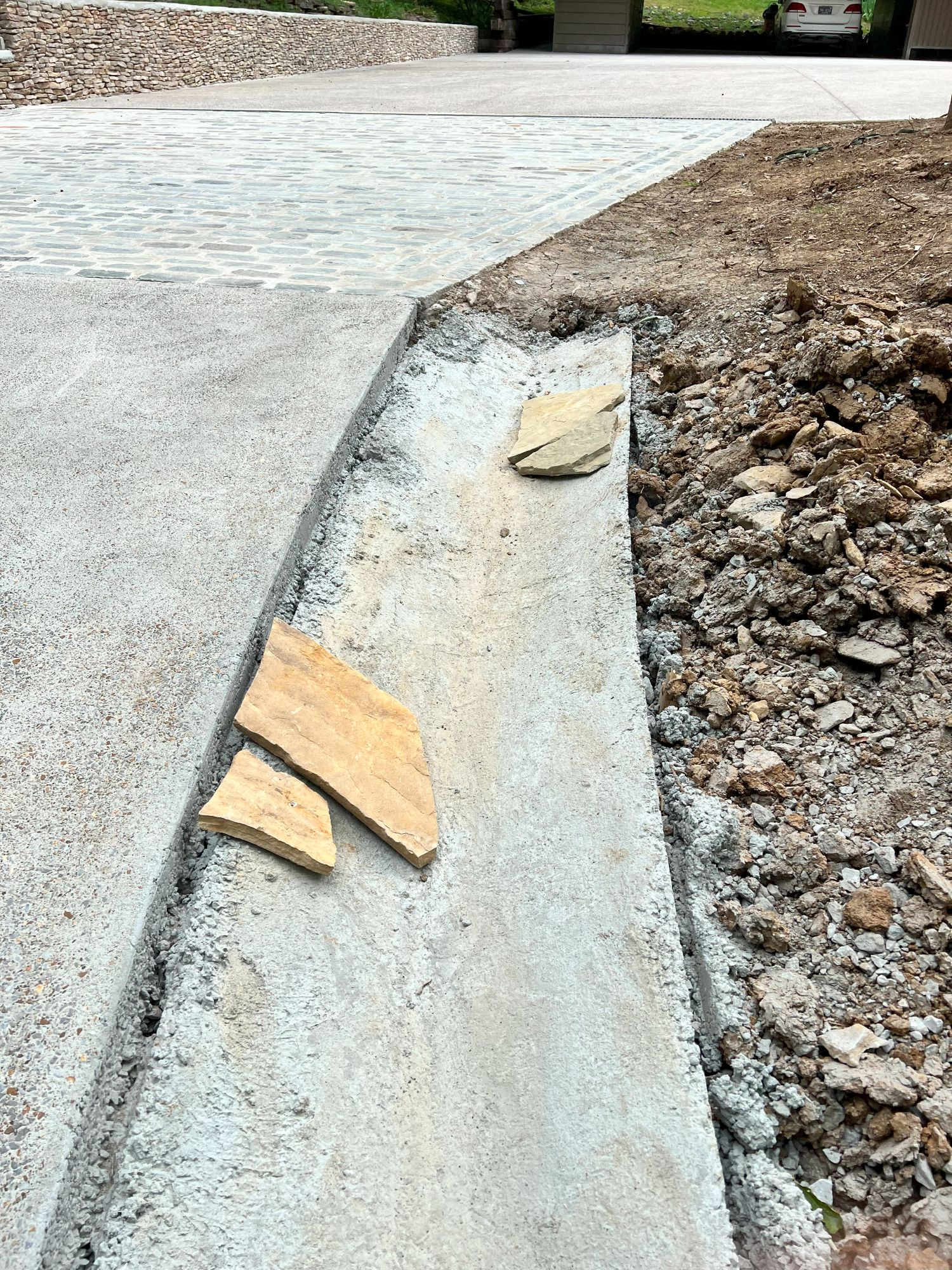Nashville’s Retaining Wall Contractor Explains Why Swales and Retaining Walls Are the Perfect Pair
Retaining walls are the perfect way to manage water runoff and add interesting design elements to uneven terrain. But as any experienced retaining wall contractor will tell you, proper drainage for your retaining wall is essential for the structure’s integrity and longevity.
Pairing a drainage swale with your retaining wall can help redirect problematic water. In this article, our Nashville retaining wall experts break down when to use a drainage swale for a retaining wall and exactly why you might want to.
When to Use a Swale on a Retaining Wall
Drainage for retaining walls comes in all shapes and sizes, and a solution that works perfectly on one property might be less than ideal on another. If one of the following applies to your property, you might want to consider asking your retaining wall contractor about adding a drainage swale to the project.
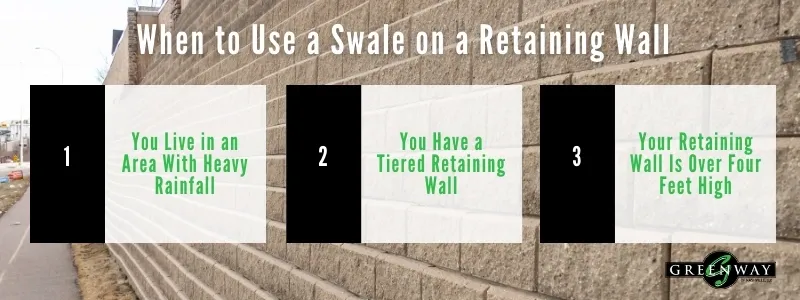
You Live in an Area With Heavy Rainfall
Nashville gets an impressive 47” of precipitation each year, so if your property is sloped or uneven, a retaining wall can be just the thing. However, it’s essential to add proper drainage for a retaining wall that’s going to see a lot of water runoff, or the water will:
- Fill the soil behind the wall, creating added weight and pressure on the wall
- Simply spill over the top of the wall, carrying sediment with it
Adding a swale behind your wall can slow the flow of water as well as divert it to a less troublesome area, providing a solution for heavy rainfall.
You Have a Tiered Retaining Wall
Tiered retaining walls consist of several short walls staggered behind and above each other like stairs. These are popular, especially for very steeply sloped property, for a few reasons:
- They add more visual interest than a single wall
- Shorter walls don’t need the same permissions as taller walls
- The stepped effect can add more usable area on the property
The main thing to keep in mind if you have tiered retaining walls is that each wall adds a certain amount of pressure against the walls ahead of it – pressure that will multiply if the soil behind the walls gets waterlogged. That’s why your contractor will likely recommend adding drainage for your retaining wall project even if the walls are relatively low.
“Work with skilled Nashville hardscaping and outdoor construction professionals who understand your vision and respect your schedule. Contact us for a free quote!”
Your Retaining Wall Is Over Four Feet High
If you opt for one single, higher wall instead of multiple lower ones, the weight of the soil that the wall is holding back is creating pressure on that one structure. When it rains and the water seeps into that soil, the wall is then holding the added weight of all that rainwater too.
It is important to hire a skilled retaining wall contractor since they will need to plan accordingly and engineer a wall that can withstand the heavy load. As you’ve probably guessed, one of the factors they’ll plan for is adding a proper drainage solution such as a French drain or swale.
Benefits of a Swale Behind Your Retaining Wall
We’ve sung the praises of retaining walls in the past, and now it’s time to get into the benefits of pairing your wall with a drainage swale.
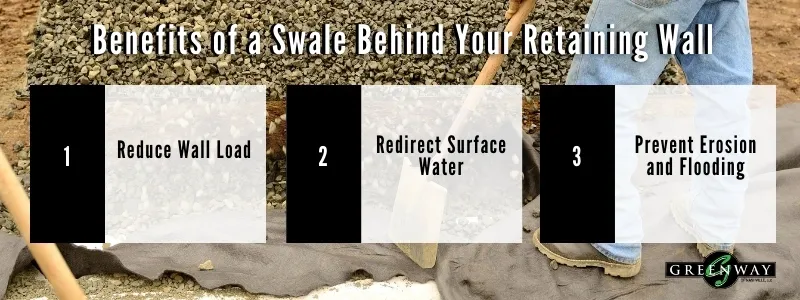
Reduce Wall Load
Adding a drainage swale behind your retaining wall will keep water from saturating the soil behind the structure, reducing the amount of pressure that builds up behind it when it rains. This will keep your wall from cracking or buckling, allowing it to last for decades.
Redirect Surface Water
Drainage swales combined with retaining walls can go a long way towards redirecting surface water away from troublesome areas and towards better spots.
Prevent Erosion and Flooding
Heavy rains can cause water and sediment to spill over the top of your retaining walls if you don’t have an effective drainage solution in place. That water and sediment can not only spell trouble for your lawn, but water damage caused by flooding can make your home structurally unsound. Adding a simple swale to the project can save you thousands in damage later.
Get Swale Help From an Experienced Retaining Wall Contractor
When it comes to drainage solutions for your Nashville property, you want to make sure everything’s done right the first time so you don’t have to deal with the hassle of redoing the project.
You can certainly try to teach yourself using tutorial videos, but there’s a lot to be said for hiring a skilled retaining wall contractor who can take the project (and stress) off your plate. If you’re in the Greater Nashville area and need help with a retaining wall or drainage swale, we’d be glad to give you a free consultation – contact us now.



